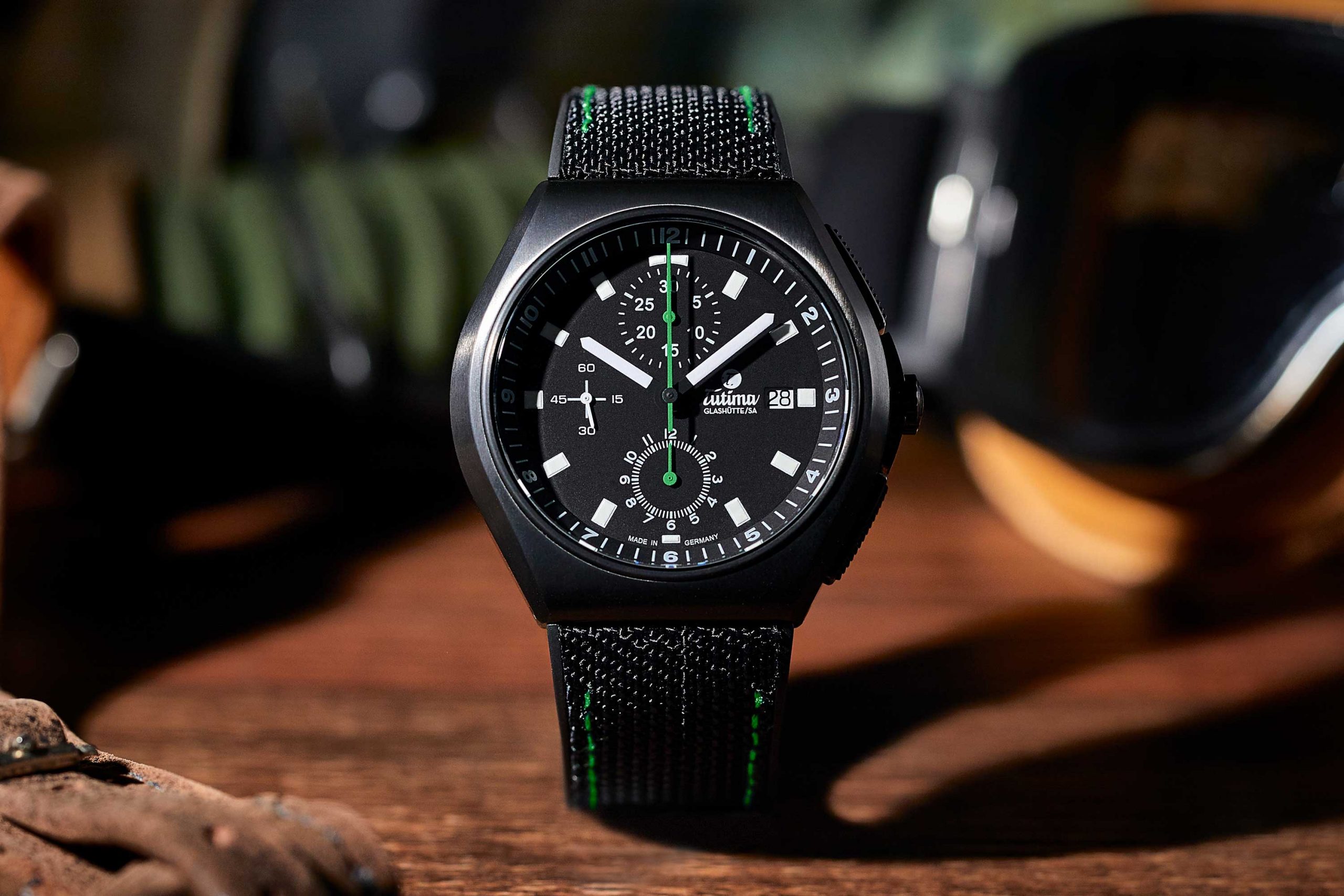Credits: Article and images by Bhanu Chopra @ Revolution Watch Magazine. See the original article here - https://revolutionwatch.com/tutima-revolution-m2-coastline-chronograph/


In the early 1980s, when the market was flooded with quartz watches, the German Armed Forces’ central procurement department developed a set of stringent criteria for a mechanical pilot’s chronograph and solicited bids from German watch companies. The story goes that they wanted a mechanical watch to avoid the uncertainty of a dead battery in a quartz watch. Tutima bid on the contract and begin developing what would become known as one of the toughest pilot’s chronographs to date.
Tutima won the contract by not only meeting the strict criteria, but also beating them with some impressive features. The most notable feature were the large chronograph pushers integrated into the case, that were functional for a pilot’s use with gloves — although it is more likely they were designed to avoid protruding buttons that may cause injury in turbulent situations, or worse break off. The case design really stood out from other military chronographs like the Orfina Porsche Design and Arctos. It has become the cornerstone of Tutima’s design for modern pilot’s chronographs.
The Tutima Chronograph ref. 798 became official standard equipment of NATO and the German Armed Forces under the NATO reference and supply number 6645-12-194- 8642 in the early 1980s and is in use as such to this day. The German Bundeswehr still have their own workshop for service and repair of this Tutima NATO Chronograph.
Dieter Delecate, owner of Tutima, tells us: “After the Flieger Chronograph which Tutima developed in the early 1940s for the pilots of the German Air Force, the official NATO chronograph of the German Bundeswehr became the symbol for our family owned brand Tutima. Pilots and clients from all over the world have admired its robustness, reliability and unique design for almost 40 years. This timepiece will always be an important figurehead of the Tutima collection.”
Some of the other features included the center chronograph minute counter with red plane-shaped tip, which is far easier to read than the small 30-minute subdial; a central red chronograph seconds hand; a 12-hour chronograph counter at six o’clock; and a 24-hour counter at 12 o’clock.
The Tutima ref. 798 had a 43mm stainless steel case with 14.5mm height. The case was built to protect the Lemania 5100 movement from magnetic fields of up to 80,000 A/m and shocks up to 7 G’s. Tutima called this watch “a vault on the wrist,” because the movement of the watch was so well protected, it was as if it were stored in a vault. A little known fact about the NATO chronograph is that, in 1992, German astronaut Klaus Dietrich Flade wore his Tutima chronograph on a Soyuz TM-14 for his mission to Mir space station.
When Lemania was acquired by Breguet, it eventually ceased production of the caliber 5100. Tutima and other watch companies using Lemania either stopped producing their military chronographs models or switched over to modified ETA/Valjoux movements.
It was a dream of Dieter Delecate to return Tutima manufacture to its birthplace in Glashütte. It took him several years to realize that dream as he saw other historical watch companies rebuild their manufacturing in Glashütte. In the 2013 Baselworld, Tutima presented the new M2 series, a modern interpretation of the NATO chronograph, made in Glashütte.
Credits: Article and images by Bhanu Chopra @ Revolution Watch Magazine. See the original article here - https://revolutionwatch.com/tutima-revolution-m2-coastline-chronograph/











